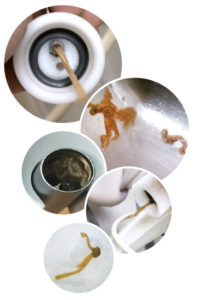 Leann Keefer, RDH, MSM
Leann Keefer, RDH, MSM
Best practices of infection prevention and control provide safety in the clinical environment and treatment protocols for patients and dental professionals. Exposure to poor water quality can pose a health risk for people and conflicts with universally accepted infection prevention protocols.
Recently, news broke reporting at least 50 children being hospitalized due to chronic infections after receiving treatment at an Anaheim, CA pediatric dental clinic. Following an investigation by the California state department of health, confirmation of the cause has been related to contaminated dental unit water with Mycobacterium. Dr. Eric Handler, the CA county’s health officer, said in a statement “I’m requiring a complete replacement of the on-site water system so that we will remove the potential threat of infection.” These outbreaks were caused by contaminated water used during pulpotomies, which introduced Mycobacterium into the chamber of the tooth during irrigation and drilling. Mycobacterium can cause severe infection among immunocompetent children, and because Mycobacterium is ubiquitous
in the environment, it poses a contamination risk.
Similar to the issues identified in Southern California, 20 children were hospitalized after complications from receiving pulpotomies at a GA pediatric dental clinic earlier this year. The Georgia Department of Public Health stated “the source of infection has been determined to be contaminated water in dental units.” According to the CDC MMWR, all water samples from the seven dental stations had bacterial counts above the American Dental Association recommended ≤500 colony-forming units (CFU)/mL (average = 91,333 CFU/mL); M. abscessus was isolated from all water samples.
Dental unit waterline contamination was first reported in 1963.¹ Research has shown microbial counts can reach >200,000 CFU/mL within 5 days after installation of new dental unit water-lines² and contamination levels of up to 1 million CFU/mL of dental unit water have been documented.³,4 In 2011, the fatal case of an 82-year-old otherwise healthy woman who developed Legionnaire’s disease after a dental visit6 was reported.
The goal of effective dental waterline treatment is to reduce the number of opportunistic microorganisms present in the water, thereby helping to break the chain of infection. Based on standards for potable drinking water by the Environmental Protection Agency, the American Public Health Association, the American Water Works Association, and the Centers for Disease Control and Prevention guide-lines (2003) state the number of bacteria in water used as a coolant/irrigant for nonsurgical dental procedures should be less than 500 CFU/mL.
Water flowing through long and narrow dental unit waterlines (DUWL’s) can harbor dangerous bacteria. When untreated, or improperly maintained, these contaminated DUWL’s can potentially harm your patients, your staff and your practice’s reputation.
“Investigations studying the microbial colonization and composition of dental unit waterlines have demonstrated that the narrow hollow bore design of the tubing promotes water stagnation and bacterial accumulation.” Source: 2015 Dental Advisor: John A. Molinari, Ph.D. and Peri Nelson, B.S., “The Need for Compliance in Waterline Maintenance”
Chemical agents commercially available are designed to inactivate or remove biofilms or deter attachment of biofilm in new or cleaned systems.
The following options are available to address the biofilm with its resident microorganisms and optimize dental unit water quality:
- Self-contained water systems
- Point-of-use filters
- Chemical treatment protocols
- Municipal water treatment systems
- Slow-release cartridge devices
Effective dental unit waterline maintenance is a key component of an infection control program. Understanding the risk involved with biofilms and contaminated aerosols compels us to remain compliant with treatment protocols.
One innovative waterline disinfection cartridge system, available for municipal or bottled water, offers a continual slow release of elemental iodine. The DentaPure® cartridge is an effective multi-award winning, EPA registered microbiological dental unit water purifier that provides safe dental unit water for 365 days, or 240L of water if usage records are kept following installation – making compliance effortless. The DentaPure cartridge contains iodinated resin beads. As water flows through the cartridge it pulls elemental iodine from the resin into the water stream. From there the iodine efficiently controls any bacteria in the water. With no protein attached to the iodine, it poses no risk for allergies and any “unused” iodine evaporates into the air. Unlike hazardous heavy metal based cartridges, the used iodine cartridge can be simply disposed of in your regular trash. This simple system is EPA registered to provide water ≤200 CFU/mL ensuring that your practice meets or exceeds water quality standards.
Effective dental unit waterline maintenance is a key component of an infection control program. Understanding the risk involved with biofilms and contaminated aerosols compels us to remain compliant with treatment protocols. Criteria for choosing a dental unit waterline treatment system includes ability to control microorganisms and biofilm at required standards, product and labor costs, safety to equipment and the environment, and most importantly, compliance to provide safe, clean dental unit water during treatment.
CDC Dental Unit Waterlines, Biofilm, and Water Quality: General Recommendations
- Use water that meets EPA regulatory standards for drinking water (i.e., <500 CFU/mL of heterotrophic water bacteria) for routine dental treatment output water.
- Consult with the dental unit manufacturer for appropriate methods and equipment to maintain the recommended quality of dental water.
- Follow recommendations for monitoring water quality provided by the manufacturer of the unit or waterline treatment product.
- Discharge water and air for a minimum of 20–30 seconds after each patient, from any device connected to the dental water system that enters the patient’s mouth (e.g., handpieces, ultrasonic scalers, and air/water syringes).
- Consult with the dental unit manufacturer on the need for periodic maintenance of anti-retraction mechanisms.



